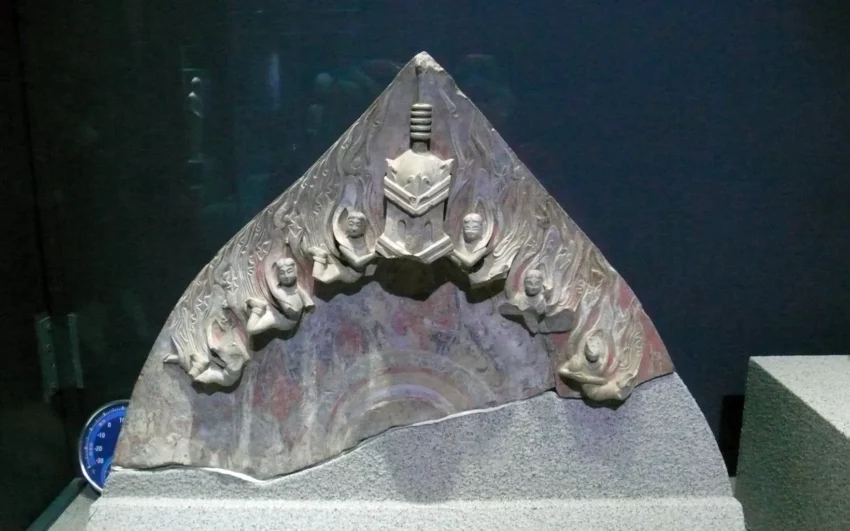Get your dose of History via Email
The Significance of Qingzhou Longxing Temple
The Qingzhou Longxing Temple, also known as the Great Buddha Temple, holds a significant place both culturally and historically in the context of Chinese Buddhism. Located in Qingzhou, a city within Shandong province of China, this temple has been a site of continuous religious activity since its establishment. Initially founded during the Northern Wei Dynasty in AD 529, the temple gained prominence during the subsequent dynastic periods, particularly the Song Dynasty (960–1279 AD).
Architectural Evolution and Elements
Throughout its existence, the Longxing Temple underwent numerous renovations which resulted in an amalgamation of architectural styles from various dynasties. Despite the changes, the fundamental layout remains a testimony to traditional Chinese temple design, featuring a grand entrance followed by a succession of halls leading to the main sanctuary.
The temple’s most notable architectural feature is the Dragon Screen Wall, which was erected in AD 959 during the Northern Song Dynasty. This screen not only embodies the pinnacle of craftsmanship from that era but also serves as a barrier protecting the temple’s main hall. Another significant element is the Pavilion containing the Shakyamuni statue, a wooden multi-storied structure that was a central aspect of the temple and maintained an important role in religious ceremonies.
The Rediscovery of Longxing Temple Treasures
A major archaeological discovery in 1996 highlighted the historical importance of the Longxing Temple. A cache of Buddhist statues dating from the 6th to the 12th centuries was unearthed, comprising over 400 pieces. The statues reveal a diverse range of artistic influence, manifesting characteristics of Indian, Central Asian, and eastern Greek artistic traditions. These findings propelled Longxing Temple into the limelight, underpinning its significance as a key repository of Chinese Buddhist art and culture.
Restoration and Preservation Efforts
In recognition of its historical and cultural value, restoration efforts for Longxing Temple have been undertaken to preserve its legacy. These endeavors focus on conserving the architecture and the cultural relics housed within the complex. Consequently, the temple has been listed as a national key cultural relics protection unit, providing it with a formal status that ensures its safeguarding for future generations. Notably, the preserved statues now have been moved to a museum for their protection and public display, ensuring the longevity of these extraordinary artifacts.
Current Status and Cultural Activities
Today, the Longxing Temple stands as a monument to China’s religious and cultural past. Although it no longer operates as a religious institution, it represents a bygone era, reflecting the spiritual aspirations and artistic achievements of the successive Chinese cultures that contributed to its development. Furthermore, the temple functions as an essential site for cultural tourism, attracting visitors who are keen to experience the historical narratives that the temple’s walls and statues silently relate.
The Longxing Temple’s status as a cultural heritage site positions it as an instrumental element in understanding Chinese Buddhist traditions and its unique role in the converging dimensions of religion and art. The temple continues to influence and educate present-day audiences regarding the multifaceted nature of China’s historical religious landscape.
Conclusion
As an encapsulation of more than a millennium’s worth of history, the Longxing Temple’s legacy endures as a testament to the elaborate tapestry of Chinese cultural and religious practices. It stands as a resonant symbol of how historical sites can bridge the past with the present, allowing us to juxtapose ancient beliefs and artistry against the backdrop of modern perspectives. The continued preservation and study of such sites ensure the perpetuation and dissemination of cultural knowledge across time and geography.
Sources:

